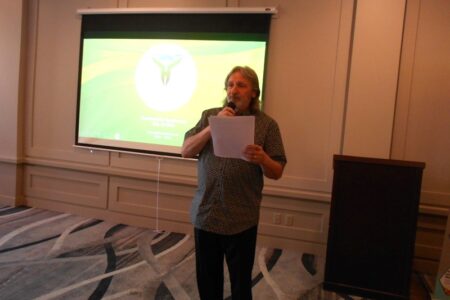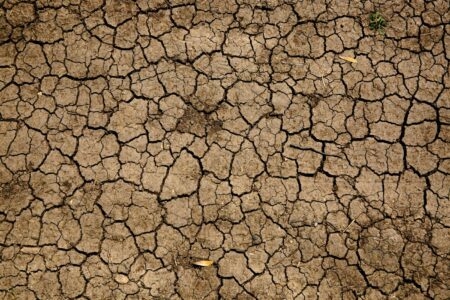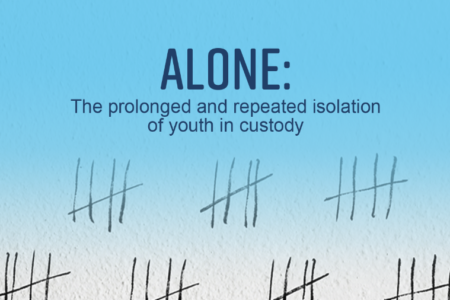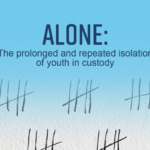Opinion: Your stoke won't save us
By Ethan Linck, for High Country News (republished with permission)
The twin summits of the mountain that U.S. Geological Survey Capt. George Davidson called “The Brothers” are 60 miles from Seattle on the far side of Puget Sound. From my office in the biology department at the University of Washington, I can just see their upper reaches, a sliver of alpine splendor beyond the snarl of traffic and slow waltz of the city’s construction cranes. For years, the view was a constant temptation, and on a clear autumn afternoon not long ago, I gave in to it, resolving to skip work the next day and go for a run.
I texted my friend Richard, and by 8 a.m. the following morning, we were jogging up switchbacks through Douglas fir dotted with darkly gleaming rhododendrons. Carrying carbon-fiber running vests, energy gel packets and 10-ounce windbreakers, we climbed quickly and had soon left the woods behind to enter a high domain of rock and dew and lichen. This late in a dry year there was no snow in the gully leading to the summit, so we found ourselves negotiating fluid scree, leaping between larger islands of rotten volcanic rock. We moved fast in heavy fog, alone among wheeling ravens and silent stone buttresses. High on the pleasure of movement, the thrill of exposure, and the vastness of the mountain, we were stoked.
Stoke: North American slang, with origins in surfing. These days, we’re stoked on gear, stoked on activities, and stoked on content. More than mere jargon, stoke has become an ethos, claiming the best life is one lived with unbridled enthusiasm and the uncomplicated pursuit of experience. For those of us who identify with modern outdoor recreation culture, stoke has increasingly begun to mediate our relationship with the natural world.
I’ve spent a lot of my adult life in search of stoke, and like a lot of recreationists, I have implicitly linked my passion for skiing, climbing and running with a passion for conservation and environmental stewardship. But after accepting this premise for most of a decade, I am no longer so sure. Can outdoor recreation really support conservation for the long-term health of the land, not just human access? In the face of the daunting planetary environmental challenges ahead, can stoke really save us? I suspect the answer is a hollow no.
There is a quote by Edward Abbey that I am convinced will outlast all his others. Long after the stoic beauty of Desert Solitaire fades into oblivion, after the ribaldry of The Monkey Wrench Gang is discarded, a knotty paragraph from a pair of speeches in the late 1970s (first put to print in this magazine) will persist against the odds. It will appear on aluminum mugs with built-in carabiners and in ornate text on Sierra Club calendars, and ever adorn the Instagram captions that have become the raison d’être for people who drive $65,000 vans and covet long-exposure shots of illuminated tents beneath the Milky Way:
“Do not burn yourselves out. Be as I am — a reluctant enthusiast … a part-time crusader, a half-hearted fanatic. Save the other half of yourselves and your lives for pleasure and adventure. It is not enough to fight for the land; it is even more important to enjoy it. While you can. While it’s still here.”
It is very much Abbey in tone and in its focus on paradoxes, and is as good a monument to the man as any. But I think its continuing popularity will have less to do with that and more to do with how well it articulates the modern idea that recreation can itself be something of a conservation act.
I first encountered the idea as a college student, and it felt like a revelation. It was as if my own skiing, running and climbing were suddenly infused with righteous purpose. I wasn’t alone: From the social media posts of brand ambassadors to the mission statements of conservation NGOs to outdoor industry fact sheets, the link between outdoor recreation and land conservation was widely reinforced. Ultimately, however, this same relentless positivity began to arouse my suspicions. Wasn’t it just a bit convenient that the goals of an $887 billion industry so perfectly aligned with a major goal of environmentalism — that what was good for business was good for the Earth? At some point along the way, the scientist in me got the better of the recreationist, and I began to wonder whether any evidence existed to support Abbey’s premise. Was it really more important to enjoy the land than to fight for it? And if so, important to whom?
I was not the first to ponder this. In the early 1970s, Riley Dunlap and Robert Heffernan, two sociologists from Washington State University, became interested in a closely related question. They wanted to know how an emphasis on outdoor recreation in society might relate to the emergence of the burgeoning environmental movement and “the corollary rise of public concern with environmental quality.” Using data from a large survey of Washington residents about their priorities for public funding, Dunlap and Heffernan tested three questions: whether outdoor recreation was correlated with “environmental concern,” or how important respondents thought it was to address contemporary environmental problems; whether the difference between “appreciative” sports like cross-country skiing and “consumptive” sports like hunting made a difference; and whether recreation was correlated with greater concern for local environmental issues affecting recreation access, versus distant, more abstract concerns (like tropical deforestation).
The pair’s findings, published in 1975 in the journal Rural Sociology, were mixed. On the whole, outdoor recreation was only weakly correlated with environmental concern, and even this depended on the type of recreation and the particular environmental problem. People who hiked or hunted, for example, showed some concern for protecting endangered wildlife, but people who visited national parks did not. Campers were concerned with agricultural pollution, but no group was particularly concerned with industrial pollution. (This was the 1970s, after all.)
Dunlap and Heffernan’s second and third hypotheses, meanwhile, were strongly supported. Other than the issue of wildlife protection, participants in appreciative activities always showed higher levels of concern for environmental issues than participants in consumptive activities. And in all cases, survey respondents cared more about environmental issues that affected their choice of recreation than issues that did not.
Forty years out, this paper has proven highly influential, producing a cascade of follow-up case studies that continues to this day. If anything can be generalized about all this research, it is that the conclusions vary, but that recreation does less than you might expect for environmental concerns. Recreation was not a good predictor of environmental attitudes in northern Wisconsin, or in Louisiana, two studies from the late 1970s found. It either was, or only maybe was, in Pennsylvania, according to independent 1998 studies, but it definitely (albeit weakly) was in the nearby Shawangunk Mountains of New York, a 2013 study concluded. On balance, a 2009 review in theJournal of Experiential Education decided that the jury was still out: “Whether a person recreates in the outdoors does not alone predict his or her environmental attitudes.”
What does? Discouragingly, the answer appears to be our identities, politics and circumstances. In many studies testing Dunlap and Heffernan’s hypotheses, socioeconomic variables such as gender, income, education and size of home municipality often had more to do with a person’s attitude toward the environment than his or her outdoor recreational activities. This helps explain why so many beautiful trails are strewn with hiker trash, or why, in the middle of a forest glade, you’ll find a faded can of Coors. It is why for every pretty place you visit, you’ll find an enraged leave-no-trace extremist, and why few people show much compunction about idling their cars at the entrance of Arches National Park, pumping 20 pounds of carbon dioxide per gallon into the desert air.
For individuals, then, stoke seems like a shaky bet for effecting the dramatic change necessary to halt accelerating ecological collapse. But maybe I’m being unfair. After all, systemic change requires organized effort, and the outdoor recreation industry — with its focus groups and lobbyists and economic heft — might channel stoke into positive environmental action. I once believed this, but I’m no longer convinced.
This is partly because outdoor recreation is far from unified in its goals and values. When Dunlap and Heffernan conducted their study, a clearer distinction existed in the kinds of activities people undertook. Appreciative activities included hiking, backpacking and photography. Consumptive activities included hunting and fishing. But that picture has become a lot more complicated. Not only has typically appreciative activity become a consumptive burden on the natural world, but consumptive activities have become more appreciative. Is tenkara flyfishing — a variant of the sport originally developed in Japan — consumptive? Are full-suspension mountain biking and steep powder skiing really appreciative in the same way as birdwatching?
Despite these ambiguities, the political divide related to them remains distinct. In the fight over Bears Ears and other national monument reductions, the appreciative sector of the outdoor industry has firmly aligned itself against President Donald Trump’s “energy first” (clearly consumptive) agenda. After the president issued an executive order reducing the size of Bears Ears by 85 percent and Grand Staircase-Escalante by half, the outdoor retailer Patagonia took the unprecedented (and widely covered) step of replacing its homepage with a stark message: “The President Stole Your Land.” Patagonia (currently an advertiser in High Country News whose founder, Yvon Chouinard, is an annual donor) called the reduction “the largest elimination of protected land in American history.”
At my desk with its view of The Brothers, I cheered them on. And yet, because Patagonia’s cultural reach exceeds its market share, I’ve begun to think that such bold politics do a lot of indirect PR work for less altruistic players. How much are most of the other brands that cater to appreciative recreationists actually contributing to conservation?
There are few appropriate data available to directly address this question. But there’s suggestive evidence that while the outdoor recreation industry is willing to take a public stand for wild places — to pledge its commitment to conservation as a political badge — it remains unwilling to pay for that commitment on any terms but its own. Take, for instance, the Outdoor Industry Association’s staunch opposition to an excise tax to directly fund conservation. (Though OIA’s members include businesses catering to hunters and anglers who are affected by traditional excise taxes on ammunition and tackle, the list is dominated by “appreciative” gear brands.) In a dedicated page on its website, the group claims that “exceptionally high and disproportionate import tariffs … on everything from apparel and equipment to footwear and backpacks” make up the difference, and that these tariffs end up in the reserves of the U.S. Treasury, where they may eventually support “the Department of the Interior (DOI), the U.S. Forest Service (USFS) and other federal land and water management agencies.”
There’s a certain irony in complaining about tax burden when your business model depends on resources under public ownership, and the full statement’s elusive language doesn’t incline me to take its words at face value. At best, the OIA’s approach seems to be a wildly inefficient, insufficient way to channel funding into conservation.
By citing its indirect contributions to federal agencies with widely varied missions and management agendas, the Outdoor Industry Association inadvertently raises a thorny question. That is: What are we conserving in the first place? Should we fight for public lands because they provide us with recreation opportunities, or because they support biodiversity? Should we only protect those plants and animals that directly benefit us or that we find beautiful — or should we fight for the entire community of life? The field of conservation biology tells us that long-term ecological stability requires the latter. But stoke fundamentally centers on the self and the quality of human experience, and thus has no intrinsic stake in biodiversity or ecosystem stability. More than anything else about recreation culture and its relationship to conservation, this troubles me.
For even if outdoor industry groups manage to engage in some political battles, or kick some money toward environmental protection, recreationist-driven conservation has historically failed to align with the principles of conservation biology. That’s largely because of the emphasis on awe-inspiring scenery at the expense of biodiversity-rich lowlands, and wildlife management that favors prey species at the expense of ecosystems. This is especially true in the mountainous West.
The Brothers are an apt example. Mount Edward and Mount Arthur are located on the eastern edge of Olympic National Forest, which, combined with the adjacent Olympic National Park, comprises nearly 1.5 million acres of federal land in the Lower 48’s northwest corner. Together, they represent an important landscape in the history of U.S. conservation. As Richard and I ran up the massif’s southern summit, we passed through an ecosystem profoundly shaped by the interests of industry — outdoor recreation and others. We began our climb in depleted, second-growth forest far below the wilderness boundary. This was not by chance: Nearly all the commercially valuable trees on the Peninsula were excluded from the boundaries of the Olympic Forest Reserve, the predecessor to today’s protected areas. This commercially valuable lowland acreage was in part given to Northern Pacific Railroad in exchange for economically useless but scenic, high-elevation holdings on nearby Mount Rainier in the Cascades. Such trades demonstrate a bias towards rock and ice in national parks and wilderness areas, what the Park Service itself admits is an overrepresentation of “scenic alpine vistas … compared with low-elevation areas with higher primary production, species diversity and richness, and complex ecosystem structure.”
Less visible to us but no less profound were the management decisions made on behalf of the area’s first European recreationists: elk hunters. When the rugged core of the region was set aside for preservation by President Theodore Roosevelt in 1909, it was largely intended as a reserve for the breeding grounds of the Olympic elk. For Roosevelt, preservation of this game species was incompatible with the presence of wolves, and by 1920, the western gray wolf had been extirpated. What happened next is a familiar story in the West: Rebounding elk populations put a heavy burden on black cottonwood and bigleaf maple, and their decline in turn led to increased erosion and widening riverbanks. The Olympics today are undeniably a less complex, less stable ecosystem then they were prior to European colonization.
It is tempting to think of these anecdotes as belonging to a less enlightened era. Today, of course, the Park Service and its counterparts are staffed by ecologists and conservation biologists, who, though constrained by our small and bitter politics, largely work with honor and diligence to manage lands for their long-term benefit. Yet there are clear modern analogues. Non-native mountain goats now roam the La Sals, bolstering Utah’s coffers with funds from expensive hunting permit lotteries, despite evidence the species harm native alpine vegetation. And the Idaho Fish and Game commissioner recently said he believes wolves “hurt” elk numbers, despite an obvious ecological relationship millions of years old.
There’s also little to suggest that appreciative recreation will expand beyond its fixation on rock and ice. The highly biodiverse but somewhat uncharismatic Cascade-Siskiyou National Monument, facing similar threats of reduction from the Trump administration, has received a fraction of the attention from industry groups that the iconic, climbable, bikeable sandstone of Bears Ears has.
What, then, are we to do? Lock ourselves indoors and despair? I don’t think so. For while recreation alone may be a poor way to instill environmental ethics, it’s a good place to start — emphasis here on “place.” By developing what sociologists call place attachment — a sense of identity and dependence on local landscapes and the ways they enrich our lives — we can move beyond the myopic view of the natural world as a playground, and towards something more sustainable and morally defensible.
In fact, there’s evidence from a diversity of studies (in the U.S., Japan, Europe and elsewhere) that place attachment may be the only thing that cuts across socioeconomic divides to predict environmentally friendly behavior. At least some of this research has also found that dedicated, regular participation in outdoor recreation can help us develop this connection. This gives me hope that a different outdoor recreation culture, one that emphasized the pleasure of knowing the wild nearby, could be a powerful force in building these links. For as much as we need arguments for self-willed nature that invoke Wallace Stegner’s “geography of hope” and the spiritual reserves of wilderness beyond the horizon, we also need daily practices that form bonds with places that are the backdrops to our lives.
Three hours after leaving the car, Richard and I broke out above the inversion onto the top of Mount Edward. Basking in sunlight as the Olympics put on a vertiginous tease through tatters of cloud, I felt there as if there was nothing better to be doing in the entire world. There is a poetry to the movement of human bodies through landscapes, a joy and beauty that are their own worthwhile ends. As Abbey would have put it: We were enjoying ourselves, with our brains in our heads and our heads firmly attached to our bodies, active and alive.
On the eastern horizon, Seattle was shedding its own layer of morning fog, its familiar landmarks glittering above the waters of Puget Sound. We turned and began to careen downhill, our elation at learning to know a new corner of home as powerful as the brisk westerly cracking open the great gray bowl of the Northwestern sky. It was a feeling related to, but distinct from, stoke.
Ethan Linck has written about science and nature for Los Angeles Review of Books, Undarkand Slate. He is a Ph.D. candidate at the University of Washington, where he studies evolution and genetics in birds.























